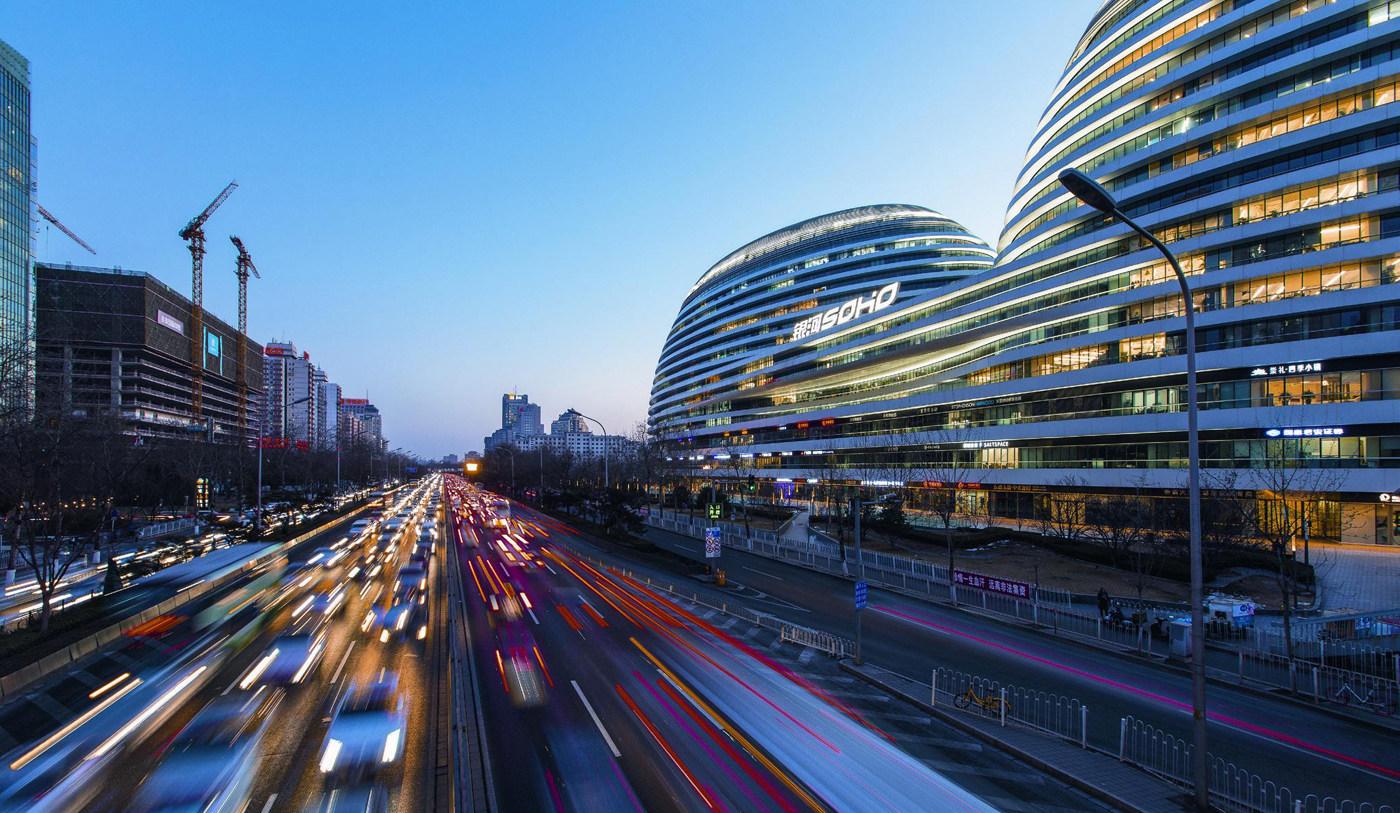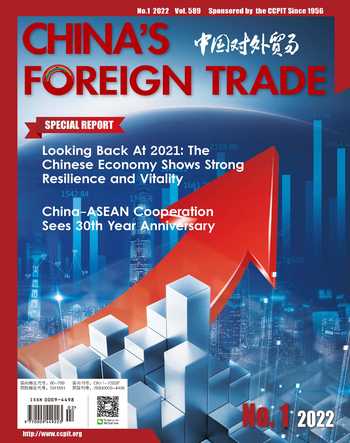National Economy Achieved Targets in 2021

In 2021, national economic re- covery and development were sustained; reform, opening up and innovation were further advanced; people’s livelihood was strongly and effectively safeguarded; new strides were made in building a new development pattern and new achievements were secured in high-quality development, meaning a strong start for the 14th Five-Year Plan.
According to preliminary estimates, the gross domestic product(GDP) was RMB 114,367 billion in 2021, an increase of 8.1% over the previous year at constant prices with an average two-year growth of 5.1%. By quarter, the GDP for the first quarter went up by 18.3% year on year, up by 7.9% for the second quarter, 4.9% for the third quarter and 4.0% for the fourth quarter. By industries, the value added of the primary industry was RMB 8,308.6 billion, up by 7.1% over the previous year, that of the secondary industry was RMB 45,090.4 billion, up by 8.2% and that of the tertiary industry was RMB 60,968 billion, up by 8.2%.
1. Industrial production experienced sustained development and high-tech manufacturing and equipment manufacturing experienced fast growth
The total value added of industrial enterprises above the designated size increased by 9.6% over the previous year, an average two-year growth of 6.1%. In terms of sectors, the value added of mining was up by 5.3%, that of manufacturing up by 9.8% and that of production and supply of electricity, thermal power, gas and water up by 11.4%. The value added of the hightech manufacturing and equipment manufacturing went up by 18.2% and 12.9% respectively, or 8.6% and 3.3% faster than that of the industrial enterprises above the designated size. By products, the production of new energy vehicles, industrial robots, integrated circuits, and micro computer equipment grew by 145.6%, 44.9%, 33.3%, and 22.3%, respectively. In terms of ownership, the value added of the state holding enterprises grew by 8.0%, that of the share-holding enterprises up by 9.8%, that of the enterprises funded by foreign investors and investors from Hong Kong, Macao and Taiwan up by 8.9% and that of private enterprises up by 10.2%. In December, 2021, the total value added of the industrial enterprises above the designated size grew by 4.3% year on year with an increase of 0.42% month on month. The Manufacturing Purchasing Managers’ Index was 50.3%, 0.2% higher than that of the previous month. In 2021, the national industrial capacity utilization rate reached 77.5%, 3% higher than that of the previous year.
2. The service sector witnessed sustained recovery with modern service industries demonstrating sound momentum of growth
The tertiary industry experienced fast growth in 2021. By industries, the value added of the information transmission, software and information technology services, accommodation and catering services, and transportation, storage and postal services grew by 17.2%, 14.5%, and 12.1% over the previous year respectively, maintaining the restorative growth. In 2021, the Index of Services Production grew by 13.1% over that of the previous year with the average two-year growth of 6%. In December, the Index of Services Production grew by 3% year on year. In the first eleven months, business revenue of service enterprises above the designated size grew by 20.7% year on year with the average two-year growth of 10.8%. In December, 2021 the Business Activity Index for services was 52.0%, 0.9% higher than that of the previous month. Specifically, the Business Activity Index for sectors like telecommunication, broadcast, television and satellite transmission services, monetary and financial services, and capital market services stayed within the high expansion range of 60% and above.
3. Market sales expanded with sales of basic living goods and upgraded consumer goods growing fast
In 2021, the total retail sales of consumer goods reached RMB 44,082.3 billion, up by 12.5% over the previous year with the average twoyear growth of 3.9%. Analyzed by different areas, the retail sales in urban areas reached RMB 38,155.8 billion, up by 12.5%; and the retail sales in rural areas stood at RMB 5,926.5 billion, up by 12.1%. Grouped by consumption patterns, the retail sales of goods were RMB 39,392.8 billion, up by 11.8%; and the income of catering was RMB 4,689.5 billion, up by 18.6%. The basic living consumption sustained good momentum of growth, with the retail sales of beverages and grain, oil and food by enterprises above the designated size growing by 20.4% and 10.8% over the previous year. The demand for upgraded consumer goods continued to unleash, with the retail sales of gold, silver and jewelry and that of cultural and office supplies by enterprises above the designated size growing by 29.8% and 18.8% respectively. In December, the total retail sales of consumer goods grew by 1.7% year on year, or down by 0.18% month on month. In 2021, the national online retail sales reached RMB 13,088.4 billion, growing by 14.1% over the previous year. Specifically, the online retail sales of physical goods were RMB 10,804.2 billion, up by 12%, accounting for 24.5% of the total retail sales of consumer goods.
4. Investment in fixed assets continued to increase and investment in manufacturing and high-tech industries maintained a good momentum of growth
In 2021, the investment in fixed assets (excluding rural households) reached RMB 54,454.7 billion, up by 4.9% over the previous year with the average two-year growth of 3.9%. Specifically, the investment in infrastructure went up by 0.4%, manufacturing up by 13.5% and real estate development up by 4.4%. The floor space of commercial buildings sold reached 1,794.33 million square meters, up by 1.9%. The total sales of commercial buildings were RMB 18,193.0 billion, up by 4.8%. By industries, the investment in the primary industry went up by 9.1%; that in the secondary industry up by 11.3%; and that in the tertiary industry up by 2.1%. The private investment was RMB 30,765.9 billion, up by 7%, accounting for 56.5% of the total investment. The investment in high-tech industries grew by 17.1%, 12.2% age points faster than the total investment, of which the investment in high-tech manufacturing and hightech services grew by 22.2% and 7.9%, respectively. In terms of high-tech manufacturing, the investment in electronics and communication equipment manufacturing and in manufacturing of computers and office devices grew by 25.8% and 21.1%, respectively. In terms of high-tech services, the investment in e-commerce services and services for transformation of scientific and technological achievements grew by 60.3% and 16%, respectively. The investment in social sector went up by 10.7% over the previous year. Specifically, the investment in health sector and in education sector went up by 24.5% and 11.7% respectively. In December, the investment in fixed assets grew by 0.22% month on month.
5. Imports and exports of goods witnessed fast growth and trade structure continued to optimize
In 2021, the total value of imports and exports of goods was RMB 39,100.9 billion, an increase of 21.4% over the previous year. Specifically, the total value of exports was RMB 21,734.8 billion, up by 21.2%; the total value of imports was RMB 17,366.1 billion, up by 21.5%. The trade balance was RMB 4,368.7 billion in surplus. The imports and exports of general trade grew by 24.7%, accounting for 61.6% of the total value of the imports and exports, an increase of 1.6% over the previous year. The imports and exports by private enterprises grew by 26.7%, accounting for 48.6% of the total value of the imports and exports, 2% higher than that of the previous year. In December, the total value of imports and exports of goods was RMB 3,750.8 billion, up by 16.7% year on year. Specifically, the total value of exports was RMB 2,177.7 billion, up by 17.3%; the total value of imports was RMB 1,573 billion, up by 16.0%. The trade balance was RMB 604.7 billion in surplus.

6. Total population increased and urbanization rate continued to grow
By the end of 2021, the national population was 1,412.60 million(including the population of 31 provinces, autonomous regions and municipalities and servicemen, but excluding residents of Hong Kong, Macao and Taiwan and foreigners living in the 31 provinces, autonomous regions and municipalities), an increase of 0.48 million compared to the population at the end of the previous year. In 2021, the number of births was 10.62 million with a birth rate of 7.52 per thousand; the number of deaths was 10.14 million with a death rate of 7.18 per thousand; the natural growth rate was 0.34 per thousand. In terms of gender, the male population was 723.11 million, and the female population was 689.49 million; the sex ratio of the total population was 104.88 (where the female population is 100). In terms of age structure, population at the working age from 16 to 59 was 882.22 million, accounting for 62.5% of the total population; population aged 60 and over was 267.36 million, account- ing for 18.9% of the total population; the population aged 65 and over was 200.56 million, accounting for 14.2% of the total population. In terms of the urban-rural structure, the permanent residents in urban areas totaled 914.25 million, an increase of 12.05 million over the end of the previous year; and the permanent residents in rural areas totaled 498.35 million, a decrease of 11.57 million. The share of urban population in the total population (urbanization rate) was 64.72%, 0.83% higher than that at the end of the previous year. The population who reside in areas other than their household registration (refers to population whose residence and household registration place are not in the same towns or streets and who have been away from their household registration place for over 6 months) reached 504.29 million, which was 11.53 million more than the previous year. Specifically, the floating population stood at 384.67 million, or 8.85 million more than the previous year.
7. Employment was generally stable and the surveyed unemployment rate in urban areas declined
The newly increased employed people in urban areas totaled 12.69 million, 0.83 million higher than the previous year. The surveyed unemployment rate in urban areas in 2021 averaged 5.1%, 0.5% lower than the average of the previous year. In December, the surveyed unemployment rate in urban areas was 5.1%, 0.1% age points lower than the same period of the previous year. Specifically, the surveyed unemployment rate of population with local household registration was 5.1% and that of population with non-local household registration was 4.9%. The surveyed unemployment rate of population aged from 16 to 24 was 14.3%, and that of population aged from 25 to 59 was 4.4%. In December, the urban surveyed unemployment rate in 31 major cities was 5.1%. The employees of enterprises worked 47.8 hours per week on average. In 2021, the number of rural migrant workers reached 292.51 million, 6.91 million more than that of the previous year, or up by 2.4%. Specifically, local migrant workers totaled 120.79 million, up by 4.1%; outside migrant workers totaled 171.72 million, up by 1.3%. The average monthly income of migrant workers was RMB 4,432, up by 8.8% over the previous year.
Generally speaking, in 2021, China sustained the continuous and steady recovery of the national economy and maintained the leading position in economic growth and epidemic prevention and control in the world, with major indicators reaching the expected targets.
- China’s foreign Trade的其它文章
- Looking Back At 2021:The Chinese Economy Shows Strong Resilience and Vitality
- CCPIT Work Meeting 2021 Is Held Virtually in Beijing
- Joint Effort to Resolve Disputes in Intellectual Property Rights
- Six Industry Opportunities As A Result of Population Change
- Demands for Coal-fired Power Will Reach New High
- IDC’s Top 10 Predictions on China’s ICT Market In 2022

